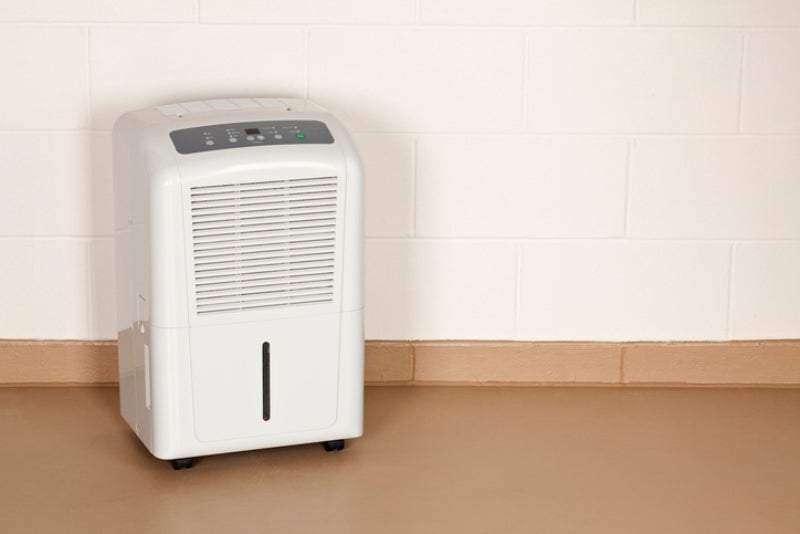Professional Dehumidifier Installation in Gaithersburg, MD
Struggling with excess moisture in your home? Whether you’re dealing with damp basements, musty crawl spaces, or sticky indoor air, a dehumidifier installation can make all the difference. Proper installation improves indoor air quality and protects your home from damage caused by humidity-related issues like warped wood, flaking paint, and mildew. As you read below, we will walk you through the benefits, types, and installation steps for a home dehumidifier and explain why trusting professionals like Triad Basement Waterproofing ensures a hassle-free experience.
The Benefits of Installing a Dehumidifier
Are you researching whether a dehumidifier is the right investment for you? There are loads of benefits you can enjoy to ensure a healthy home. Consider the following advantages below:
- Improves Indoor Air Quality: Reduces allergens like dust mites and mold spores, making breathing easier.
- Protects Your Home: Prevents excess moisture that can lead to damage like rotting wood, peeling wallpaper, and structural issues.
- Eliminates Musty Odors: Creates a fresher, more pleasant ambiance.
- Energy Efficiency: Optimized humidity levels reduce strain on HVAC systems, potentially lowering energy bills.
- Enhanced Comfort: Lowers humidity to make the indoor environment feel cooler and more comfortable.
Types of Dehumidifiers
Did you know there are several types of dehumidifiers? Depending on your home’s specific needs, you may want to consider these popular options:
- Portable Dehumidifiers: Ideal for single-room use and easy to move and operate.
- Whole-House Dehumidifiers: Integrated into your HVAC system to regulate humidity throughout the home.
- Crawl Space Dehumidifiers: Specially designed to handle high-moisture areas, like under your home.
- Basement Dehumidifiers: Specifically made to reliably handle the cool, damp air in basements.

How to Choose the Right Dehumidifier
Picking the perfect dehumidifier involves knowing your home and its needs. Triad Basement Waterproofing can help you explore your options and recommend the perfect solution for your moisture challenges. Here are some considerations to help you decide:
- Room Size: Measure the square footage of the room or area that needs a dehumidifier and look for a model that fits.
- Moisture Levels: Areas with severe dampness, like basements, may require high-capacity models.
- Placement Needs: Will it be used in a basement, a crawl space, or throughout the home? Different areas have tailored models.
- Noise Levels: If installing in living areas, consider quieter models to avoid disruptions.
Pre-Installation Checklist
Make sure you’re ready for a dehumidifier installation with this quick checklist:
- Assess the area for high humidity levels or problem spots (such as basements or crawl spaces).
- Choose the right-sized dehumidifier based on your home’s square footage and moisture issues.
- Clear the area where installation is required, removing clutter for easy access.
- Ensure access to a power outlet near the installation site.
- Evaluate drainage options, especially for models requiring continuous water removal.
Step-by-Step Installation Guide
It’s best to rely on professional dehumidifier installation companies for complex systems like a crawl space dehumidifier installation to avoid costly mistakes. Here, we break down a simple outline of the dehumidifier system installation process:
- Position the Dehumidifier: Select the right area and ensure there’s adequate ventilation around the unit.
- Connect to Power Supply: Plug the dehumidifier into a reliable electrical outlet. Note that some systems may require professional wiring.
- Set Up Drainage System: Most models need a drainage system to remove collected water. Depending on your model, you may need a hose or pump.
- Adjust the Settings: Use the controls to set the desired humidity level (typically 30-50%).
- Test the System: Run the dehumidifier to ensure proper operation and check for leaks or issues.
FAQs About Dehumidifier Installation
Installing a dehumidifier can raise several questions, especially if you’re setting one up for the first time. We’ve compiled a list of frequently asked questions to address common concerns and help ensure a smooth installation process. These answers will provide clarity on proper usage, maintenance, and troubleshooting:
- Can I install a dehumidifier myself? Small portable units are easy to install yourself, but whole-house or crawl space systems require the expertise of professionals.
- How do I maintain my dehumidifier? Perform regular maintenance, including cleaning filters, checking drainage systems, and wiping down the unit’s coils.
- Do dehumidifiers increase energy bills? While they use electricity, their ability to reduce humidity can lighten the load on your HVAC system, potentially decreasing overall energy consumption.
- Does Triad Basement Waterproofing handle mold remediation? We do not offer mold remediation services. However, we use antimicrobial spray to prevent mold when installing systems to address moisture issues.
- Do you work outside Gaithersburg, MD? Absolutely! While based in Gaithersburg, Triad Basement Waterproofing serves the entire DMV area, including western Maryland, and northwestern Virginia.
Contact Us for a Free Installation Estimate
Installing a dehumidifier is a game-changer for protecting your home and improving indoor air quality. However, doing it wrong could cause more harm than good. At Triad Basement Waterproofing, we’ve helped countless homeowners across the DMV area tackle moisture issues with expertly installed dehumidifier systems. Don’t wait for the humidity to wreak havoc in your home. Contact us today for a free dehumidifier installation estimate.
Why Choose Us?
- Over 27 Years of Experience
- Family Owned and Operated
- Licensed, Bonded & Insured
- Waterproofing Experts
- Lifetime Transferable Warranty
